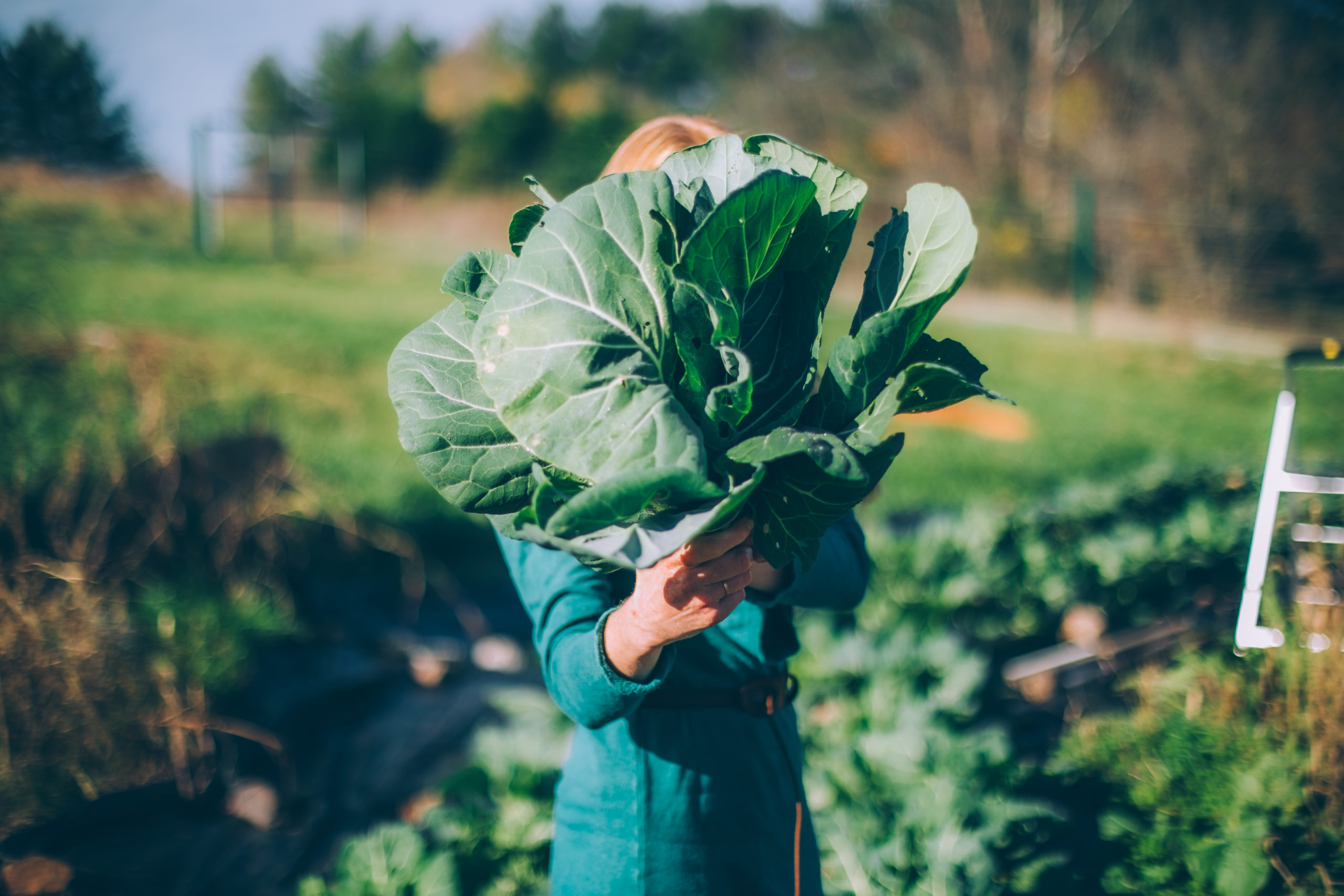
There are always collard greens in the family garden. In the fall and winter, we go through so many collards on a weekly basis it becomes unreasonable to buy them. If you’ve ever made collard greens, you’ll know they cook down a lot. An enormous bouquet of collard greens you’d think would feed your entire extended family will ultimately barely serve three. Thus, we plant about 50+ collard greens in the garden during the colder months.When you plan to make a pot of collard greens, make sure you harvest / procure enough to feed the crowd.
I have personally always been Team Collard Greens. Kale is great, but collards are so, so much better. They’re easy to grow, super hardy, gorgeously green, and extremely nutrient dense. Collards are rich in calcium, magnesium, vitamin C, iron and vitamin K – all excellent nutrients especially for women’s health. As with most of our leafy greens, collards are a great source of dietary fiber (which most folks are really lacking!). And when you cook up a batch, they can go with nearly any meal. Leafy greens – be it kale, collards, spinach, arugula, lettuces or even sprouts – are such an important part of our daily diets. The nutritional punch they pack on your plate is huge, and with the right recipe, will be something you continuously crave.
More nutrient dense yummy meals: 20 Minute Messy Buddha Bowls



This is my family recipe for southern comfort collard greens. A staple at our table for every fall and winter holiday gathering, and easy enough for weeknight dinners, too. There are tons of variations on this depending on your taste:
a. Add bacon and cracked pepper for a savory breakfasty option.
b. Add vinegar at the end in place of soy sauce for the more traditional southern approach.
c. Add nutritional yeast and smoked paprika at the end for a cheesy smokey flavor that goes great with heartier dinners like red meat or burgers.
My preference: I like lots of garlic, and I cook them a long time so they almost melt in my mouth. Adjust cooking time to your texture liking.








